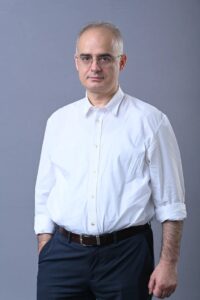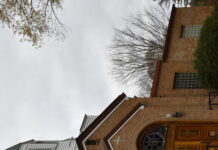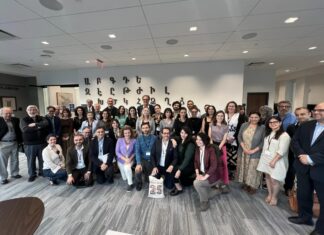By Alin K. Gregorian
Mirror-Spectator Staff
WORCESTER, Mass. — To mark the 95th anniversary of the Armenian Genocide, the Strassler Center for Holocaust and Genocide Studies at Clark University put together a two-day in-depth study on the state of Armenian Genocide research. The program included workshops as well as a panel discussion on Friday, April 9.
Friday night’s panel featured new faces, as well as some standard-bearers in the field.
Taner Akçam, the Robert Aram and Marianne Kaloostian and Stephen and Marian Mugar professor of Armenian Genocide studies at the Strassler Center, one of the organizers of the program, summed up the point of the program, saying that he wanted academics to see what the problems are regarding Genocide research and set future research goals. “We aspire to take a picture of where research and scholarship starts,” he said. The aim, he said, is to help Turkey shed light on the “dark side of [its] history and acknowledge [its] historic wrongs.”
Deborah Dwork, the director of the Strassler Center, concurred, saying the program aimed to “move us all forward on research on the Armenian Genocide. This is a pivotal moment in the struggle for the recognition of the Armenian Genocide as a Genocide by the Turkish government.”
The seminar aimed to find out what resources and materials are available in archives “scattered around the globe,” she said. Dwork added that in light of the Historic Commission proposed as part of the Protocols proposed to open diplomatic relations between Armenia and Turkey could benefit from the timing of the conference.
Dr. Ugur Ungor, from the University College of Dublin, spoke about his study of genocide studies and mass violence. Ugur, who was born in Turkey, was raised in Holland and said that his interest in studying mass violence came from Dutch war novels, which he explained sensitized him about violence. In addition, his upbringing — “a local outsider” — that of a Turk in Holland, affected his decision to enter the field of Armenian Genocide research.
Ungor said his grandmother started talking about the Armenian Genocide in 2001 without ceremony one day when discussing the family genealogy. In addition, he said he did field work and took oral histories of a family from Erzincan. The efforts led up to a documentary. Ungor showed several brief clips from the award-winning documentary, “The Land of Our Grandparents,” for which he teamed with Alexander Goekjian, the grandson of Vahram Goekjian, whose moving Genocide survival story Ungor had read. The two traveled to various villages in Diyarbekir to find the home of the Goekjians. The film aired on Dutch television. (Now it is available for sale, though it is in Turkish and Dutch.) The scenes, showing depopulated villages and roofless, gutted Armenian Churches, touched the audience. The clips also featured his grandmother, who was telling him of the stories her own grandmother had told her about the fate of the Armenians.








